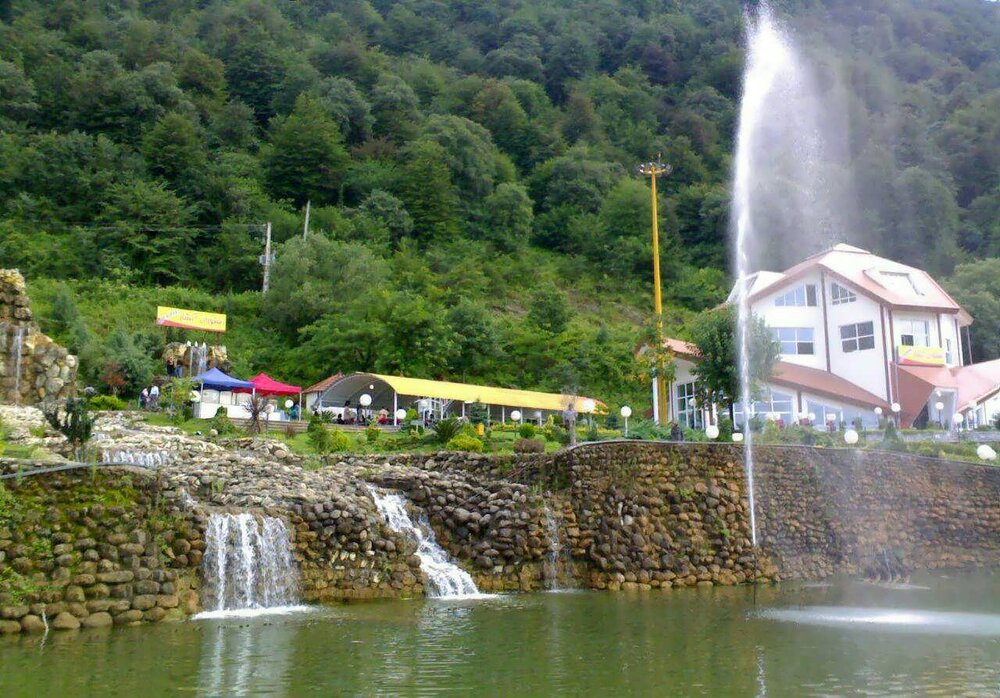Hydro tourism on track to drive development in northern Iran

TEHRAN – Over the past couple of years, various categories of hydro tourism have attracted the attention of potential investors across Mazandaran province, which is bounded by the Caspian Sea.
Home to many dams, rivers, wetlands, and a beautiful stretch of coastline, the northern Iranian province has long been a major destination for local holidaymakers.
Creating the organizational, personnel-related, and financial conditions to improve the infrastructure for water-based tourism has been pursued more seriously over the past couple of years as a pillar for development in the lush green region.
“All water facilities [across Mazandaran] have a high capacity for tourism,” Mohammad-Ebrahim Yakhkeshi, the managing director of Mazandaran Regional Water Company, told IRNA on Tuesday.
“Mazandaran, which embraces 120 rivers with a total length of 7,000 km, and 10 dams, is one of the most prosperous provinces in the country in terms of the capacity to develop hydro tourism industry over its river basins.”
The official mentioned that hydro tourism could fetch a high-income, adding: “Since 1395 (2016), a number of dams in Mazandaran have been [temporarily] handed over to domestic investors for the implementation of water tourism.”
“Studies on the tourism infrastructure and identification of the capacities of each of the water resources and structures in Mazandaran have been [already] carried out to identify the needed facilities and capabilities,” the official explained.
“The implementation of tourism projects which are associated with water resources is now underway relying on the private sector,” he added.
The northern section of Mazandaran consists of a lowland alongside the Caspian and an upland along the northern slopes of the Alborz Mountains. Marshy backlands dominate the coastal plain, and extensive gravel fans fringe the mountains. The climate is permanently subtropical and humid, with very hot summers.
Earlier this week, Mazandaran’s first hydro tourism complex, which has been developed across the Salahedin Kola Dam, was officially inaugurated by Energy Minister Reza Ardakanian via a video conference.
“A budget of 280 billion rial (some $6,650 at the official rate of 42,000 rials) was allocated to develop the first phase of the tourism complex, which covers 40 ha in area.”
On Sunday, Deputy Energy Minister for Water and Wastewater Affairs Ghasem Taqizadeh Khamesi said 30 dams across Iran have been selected to be developed into tourism destinations, adding “Water tourism of the dams is estimated to generate 3,000 direct jobs when fully operated.”
Back in May 2019, the Ministry of Energy inked a memorandum of understanding with the Cultural Heritage, Tourism, and Handicrafts Ministry to lay the ground for launching dam tourism.
More glimpses of hydro tourism
Hydro tourism, or water tourism involves traveling to places specifically to take part in water-based activities. Some individuals who do not wish to partake in water-related activities embark on water tourism trips so that they can visit tourist sites that sit close to bodies of water such as lakes, rivers, dams, oceans, etc. Water tourists are regularly independent travelers, although some travel businesses do organize group trips.
While water tourism often includes active chases, some water tourists visit islands and shore regions to join more relaxed pursuits such as diving or swimming. Travel businesses organize tours of coral reefs and arrange for local tour guides to preside over excursions on which travelers can swim with local marine life such as dolphins or even sharks. Some tour operators also cater to families who are primarily focused on swimming and tanning rather than interacting with aquatic life.
Water trips occasionally involve inland destinations such as lakes and rivers. Holidaymakers can sail or swim on lakes while many rivers are ideally suited to white water rafting. Additionally, some leisure businesses operate water parks that contain swimming pools, water slides, and areas for kayaking or canoeing.
Mazandaran at a glance
Mazandaran, as a cradle of civilization, has a rich and colorful history. An early Iranian civilization flourished at the beginning of the first millennium BC in Tabarestan (Mazandaran). It was overrun in about 720 CE by the Arab general Yezid ibn Mohallab and was the last part of Iran to be converted to Islam, according to Britannica.
Its insecure eastern and southeastern borders were crossed by Mongol invaders in the 13th and 14th centuries. Cossacks attacked the region in 1668 but were repulsed. It was ceded to the Russian Empire by a treaty in 1723, but the Russians were never secure in their occupation. The area was restored to Iran under the Qajar dynasty.
The highland slopes rise abruptly in the west and more gently in the east. Forests have been largely destroyed; the higher parts are cultivated summer pasture studded with villages partly deserted in winter. Wild boar, deer, and birds are numerous; the tiger, formerly found in the lowland, has disappeared. Cattle are usually humped; the buffalo is widely used as a draft animal. There are many rivers, including the Chalas, Heris, Talar, Tajan, and Neka, which are well-stocked with trout and salmon.
Agriculture dominates the economy of the region; crops include rice, wheat, barley, tobacco, cotton, oilseeds, jute, tea, fruits, and vegetables. Agribusinesses, established under the agricultural reforms of the middle 1970s, undertook large-scale and mechanized farming. More than 247,000 acres (100,000 hectares) of land were developed for the production of rice.
Though much of Iran is composed of arid and semi-arid lands, the country has many rivers, waterfalls ponds, and wetlands offering scenic vistas to nature lovers and eco-travelers, backpackers, birdwatchers, and fishers.
AFM/

Leave a Comment